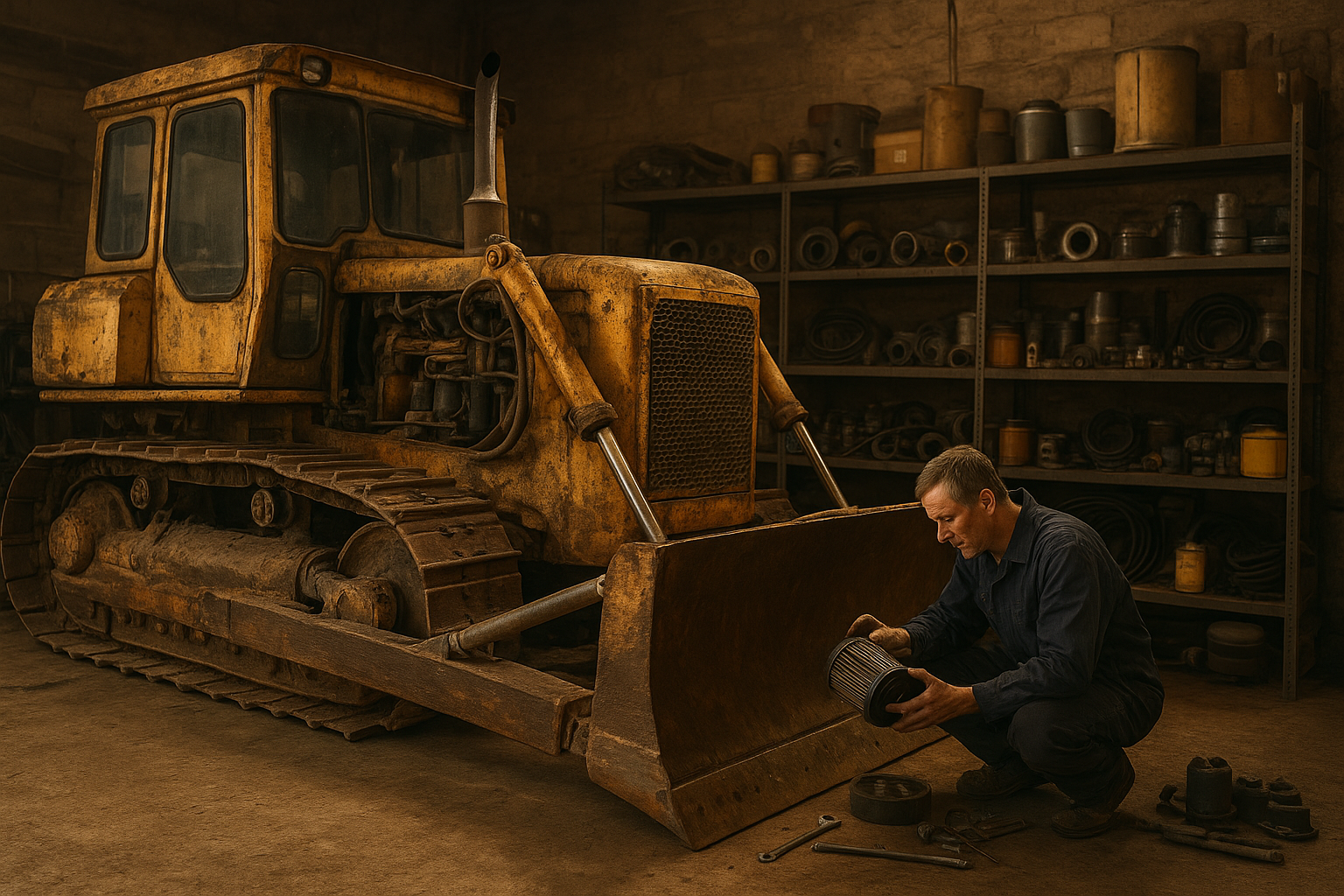The Dirt Desk - Q&A
What Are the Biggest Challenges in Sourcing Parts for Older Equipment?
For heavy equipment enthusiasts and operators, keeping older machines running can feel like both a passion and a puzzle. While vintage or older models have proven reliability and unique character, one of the most frustrating aspects of owning them is sourcing the parts needed to keep them operational. Here’s a closer look at the biggest challenges in finding parts for older equipment—and how operators can overcome them.
1. Parts Discontinuation
Manufacturers often discontinue parts for machines that have been out of production for years. Once a model is no longer supported, original components become rare and expensive. This can make even simple replacements, like filters, belts, or hydraulic seals, difficult to find.
Tip: Check with specialized dealers or look for NOS (new old stock) parts. Online communities of vintage equipment enthusiasts can also be a surprisingly good resource for locating discontinued items.
2. Compatibility Issues
Even if a part exists, it may not be compatible with your specific machine due to revisions or different production runs. Older equipment sometimes went through several updates during its lifecycle, and parts can vary slightly between versions. Installing the wrong component can cause serious damage.
Tip: Always verify part numbers and cross-reference manuals or manufacturer archives before ordering.
3. Limited Supplier Options
Unlike new equipment, older machines have a much smaller pool of suppliers. Many suppliers focus on current models, leaving owners of older machines reliant on a handful of specialty shops. This scarcity often drives up prices and shipping times.
Tip: Build relationships with suppliers who specialize in vintage or older equipment—they often have insider knowledge about hard-to-find parts.
4. Wear and Quality Concerns
Used or aftermarket parts can be a lifeline, but quality can vary dramatically. A worn part may not last long, while low-quality reproductions could fail prematurely, causing costly downtime.
Tip: Whenever possible, inspect used parts carefully or ask for warranties. Community forums and reviews can help identify reputable sources.
5. Rising Costs
Because older parts are rare and sometimes sourced from overseas, prices can be surprisingly high. Even basic components may cost multiples of what a modern equivalent would.
Tip: Consider preventive maintenance to reduce the need for urgent replacements and stock up on consumables that are prone to wear.
6. Shipping and Logistics Challenges
Sourcing parts from far away, especially internationally, can introduce shipping delays, customs headaches, and extra costs. In some cases, operators may need to travel or rely on freight services to get essential components.
Tip: Plan ahead. Keep a small inventory of frequently replaced parts and coordinate with suppliers early to avoid project delays.
Sourcing parts for older equipment is not just about finding a replacement—it’s about strategy, patience, and community. While the challenges are real, many enthusiasts find the process rewarding, as it deepens their knowledge of the machines they love. With careful planning, research, and networking, even the rarest parts can be tracked down, keeping vintage and older heavy equipment working for years to come.

